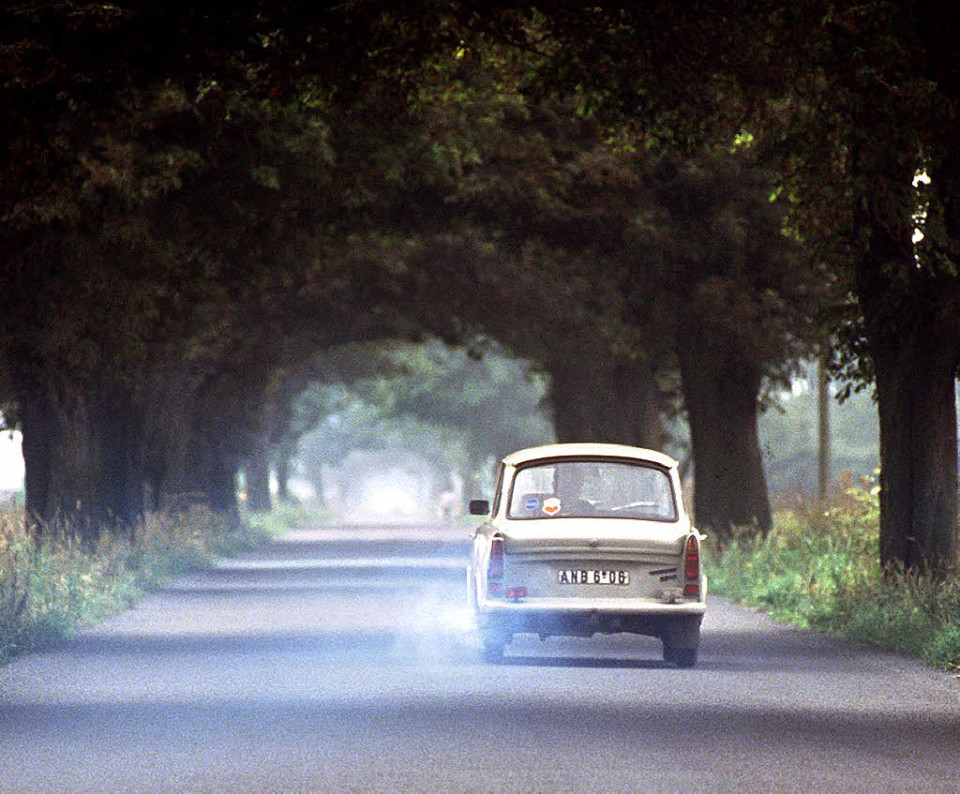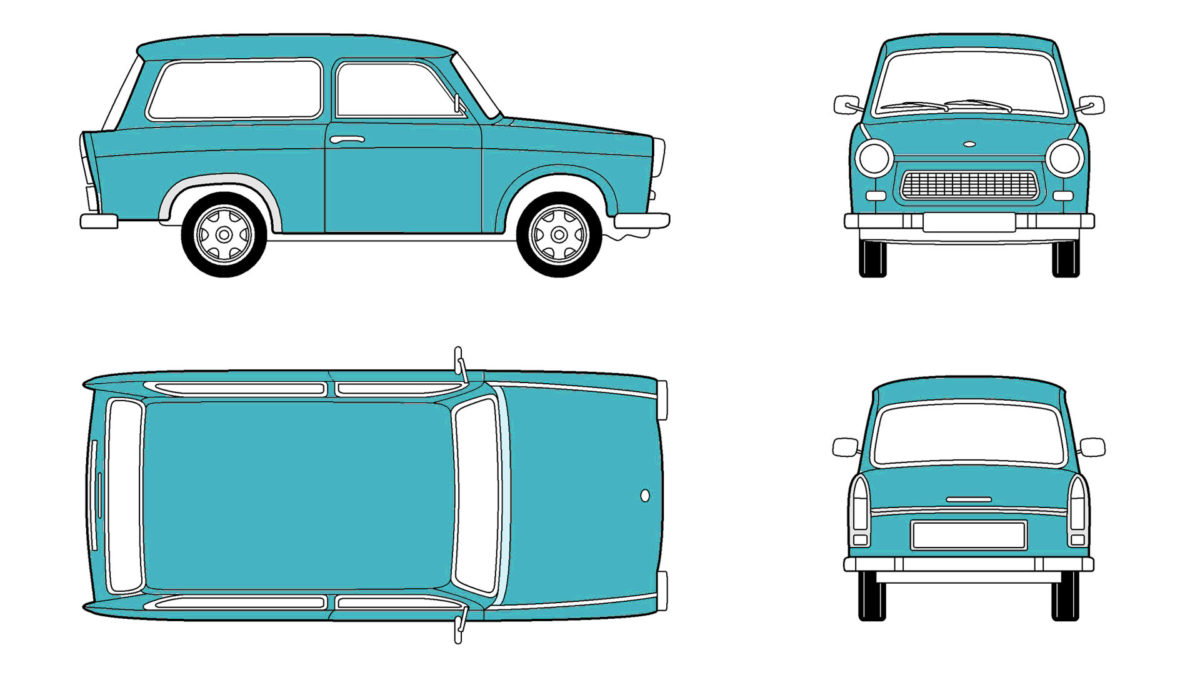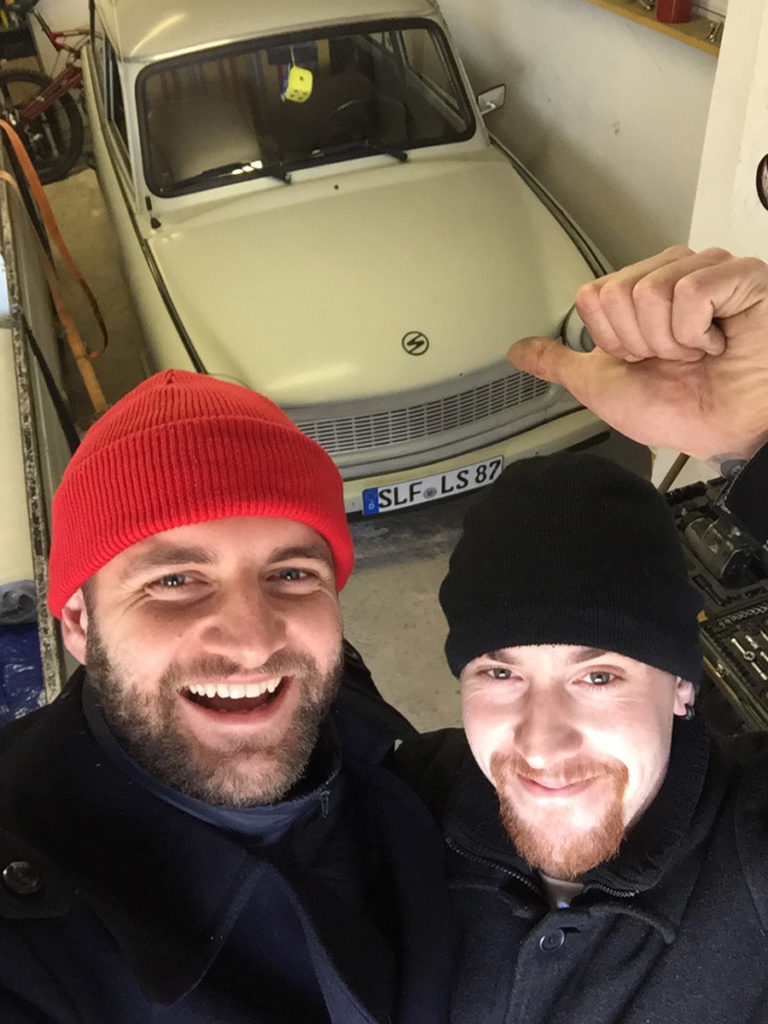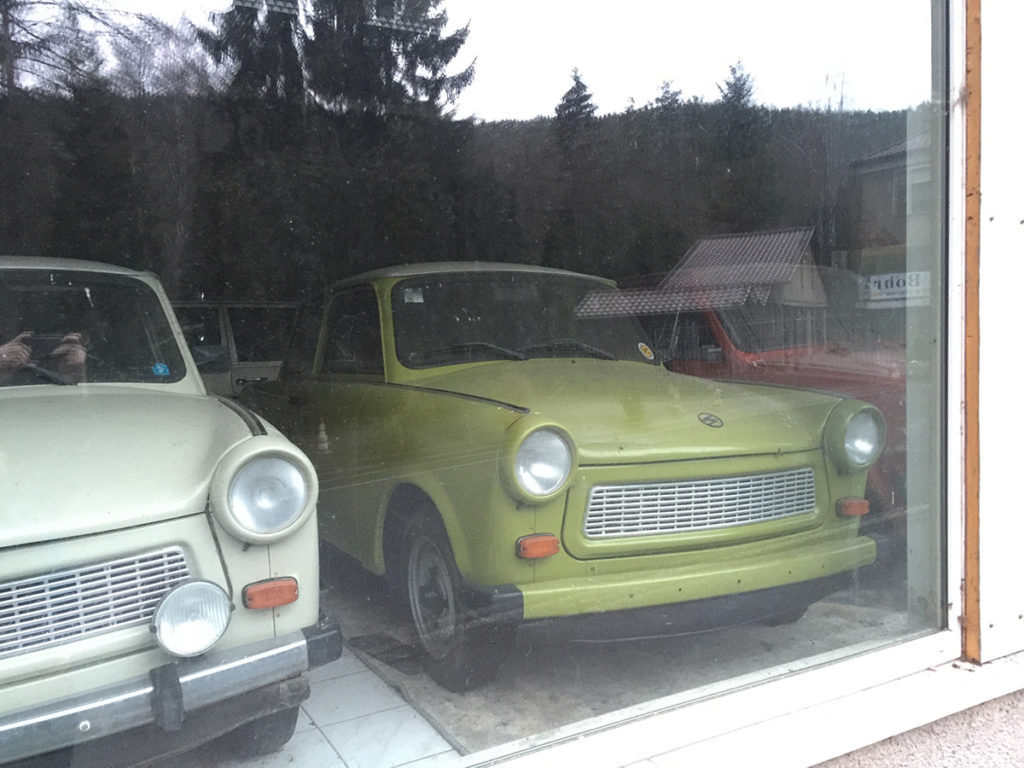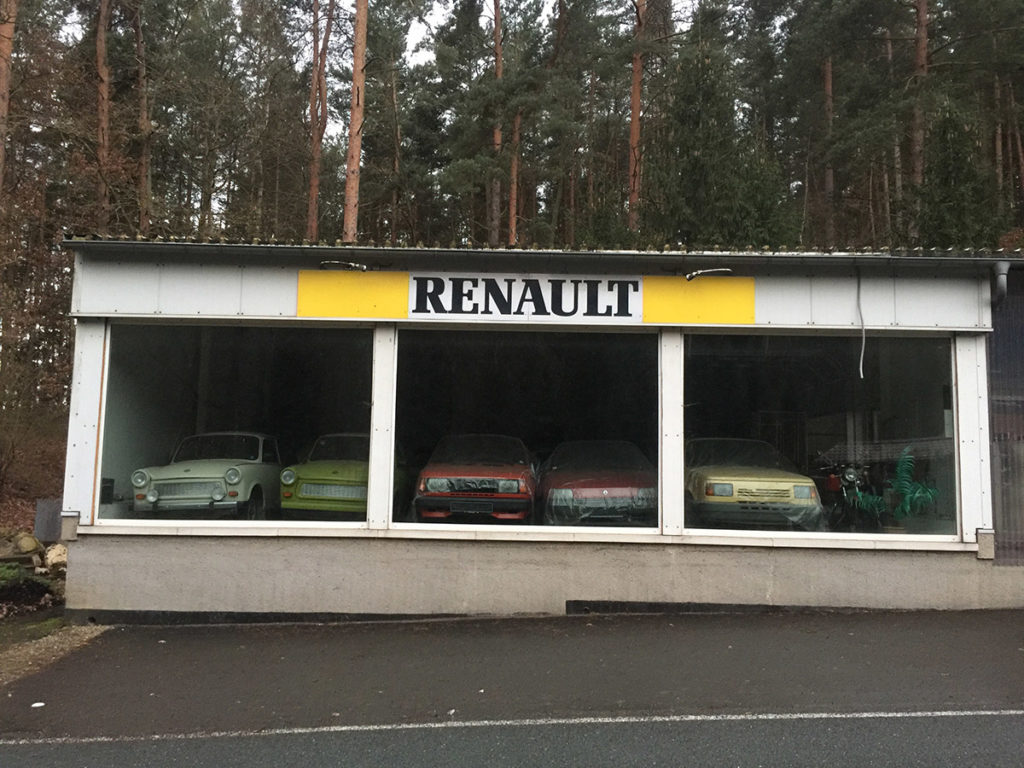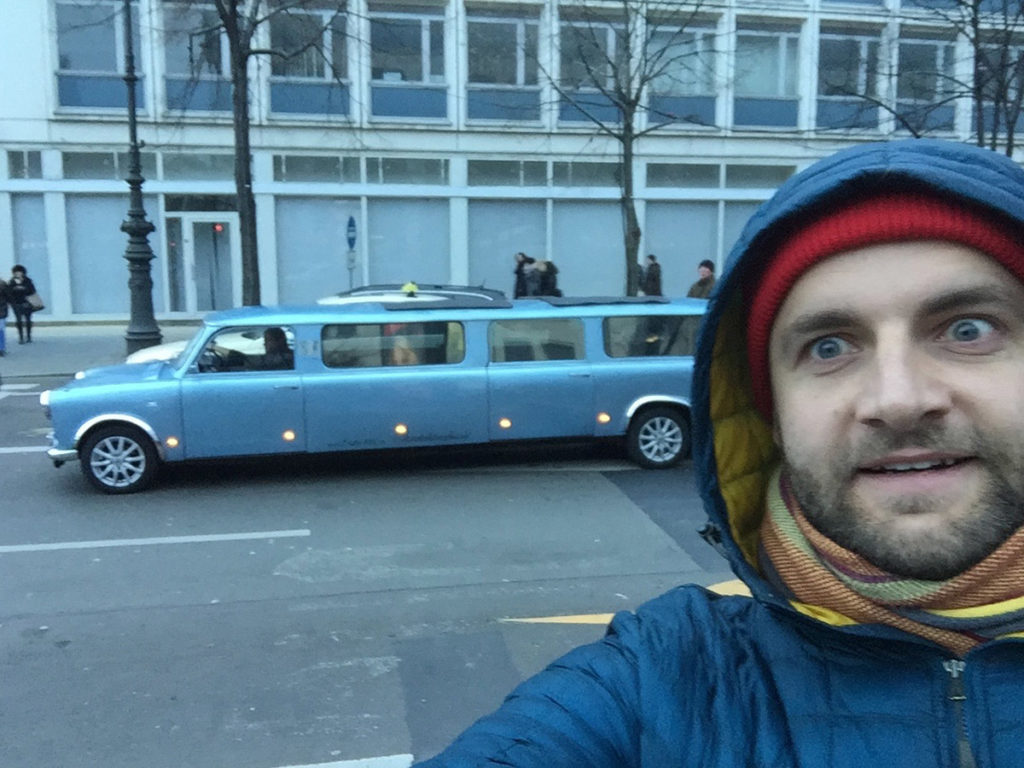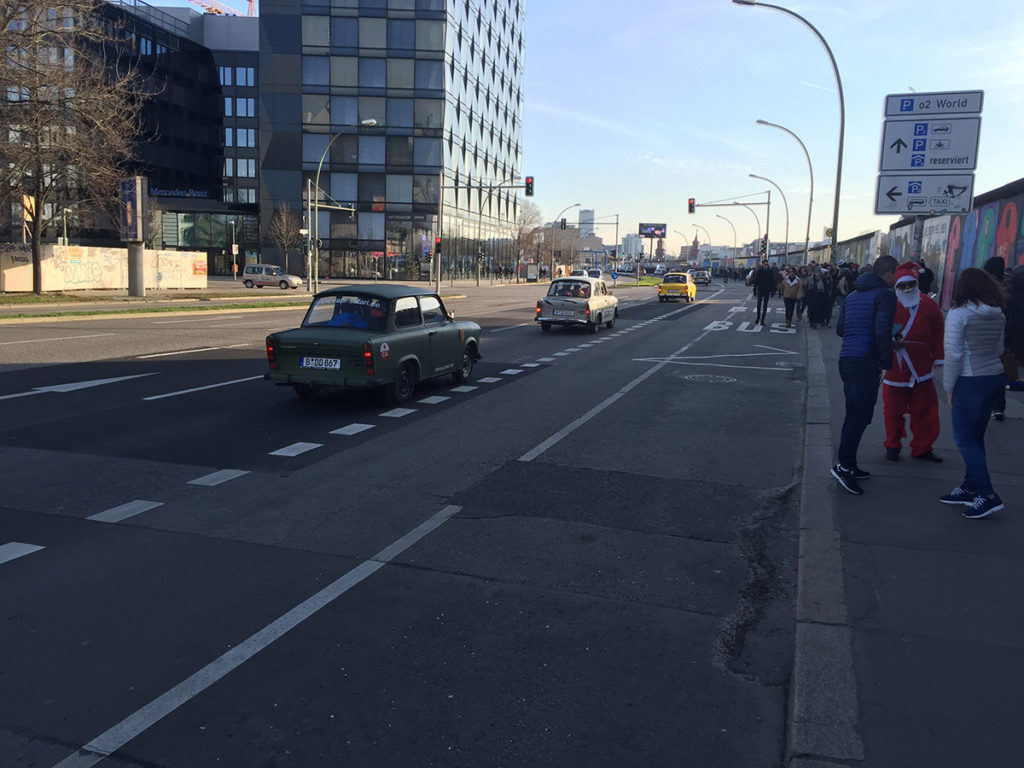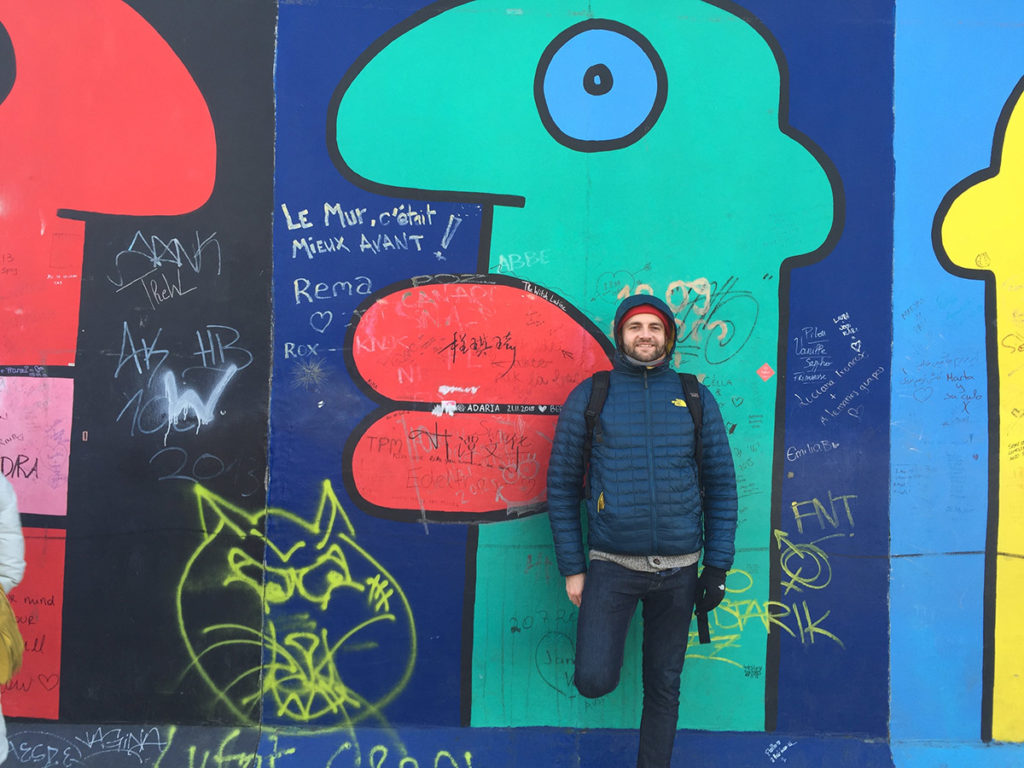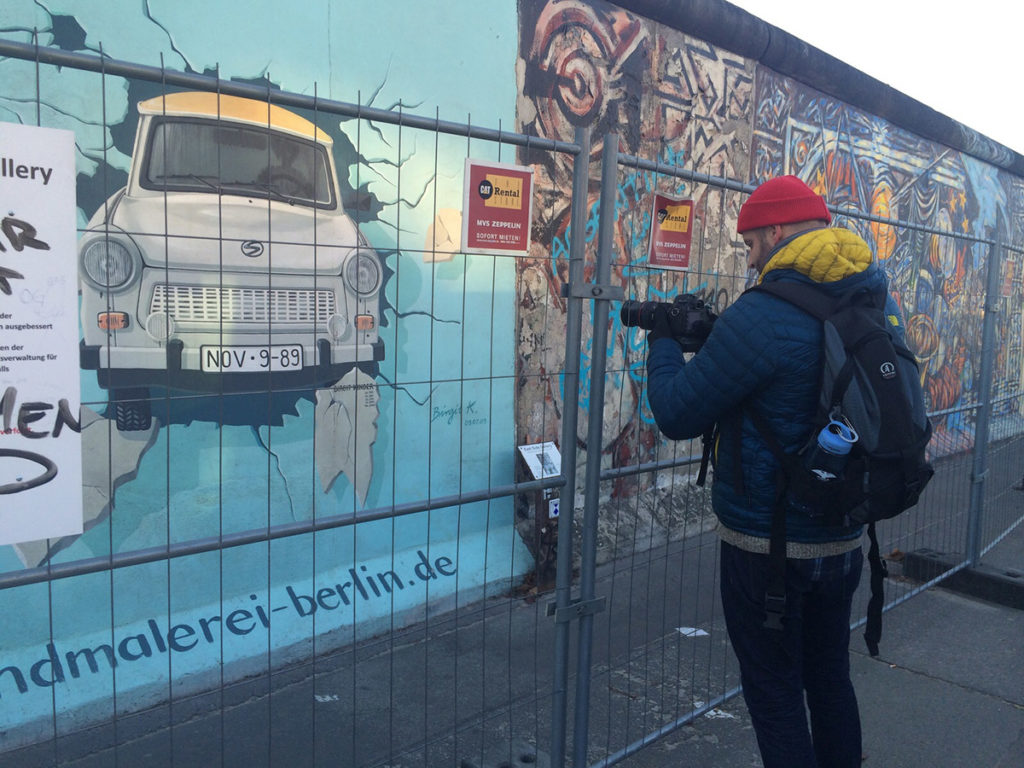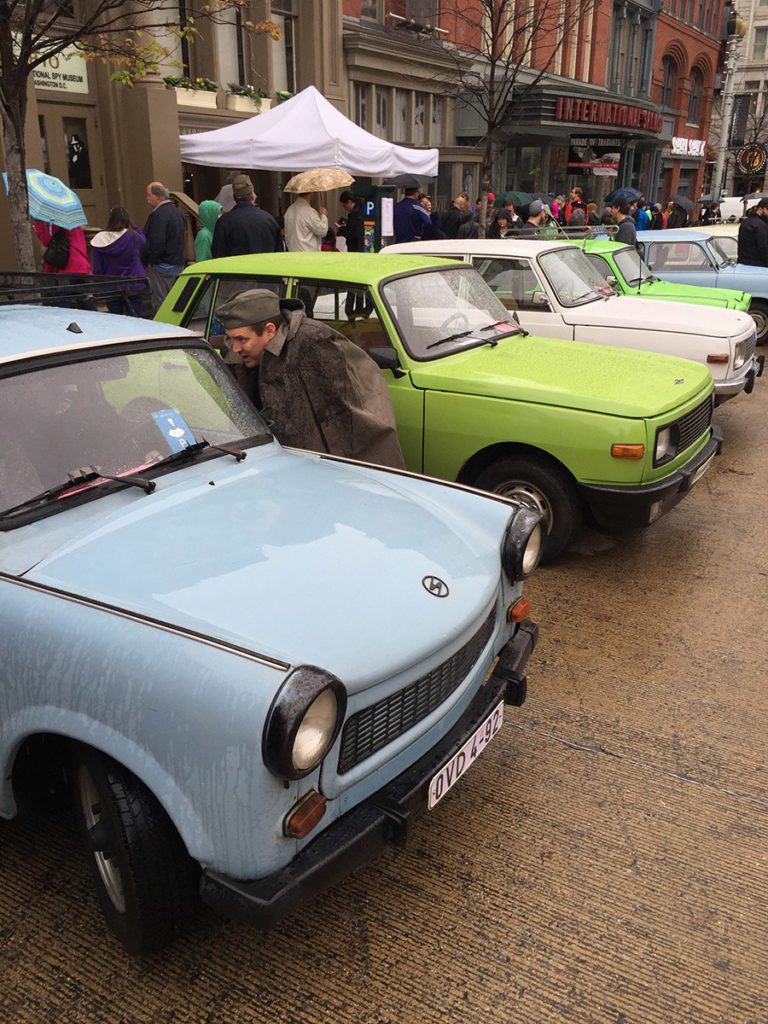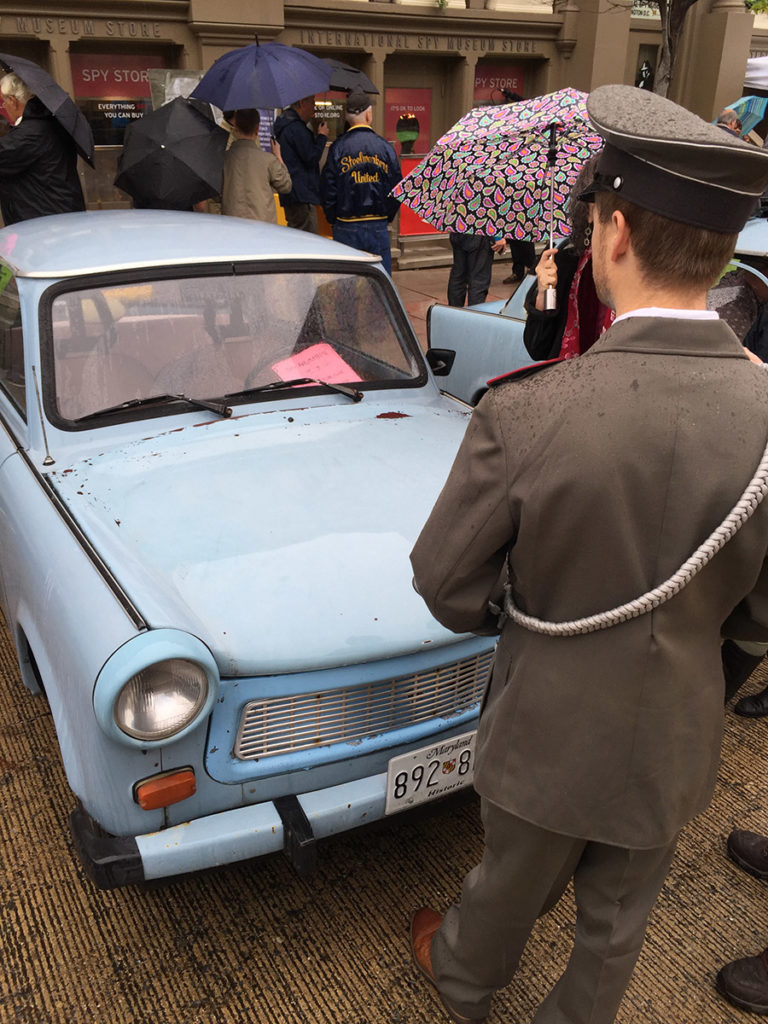The
Trabant.
Dreams of Smoke
Director & Cinematographer
Alexander Kreher
Producer
Nathan Nunnelly
Production
Ost Haus
A Documentary about the car that became the symbol of the Cold War and the impact it had on one of it’s inhabitants.
I am a child of war, but a war that wasn’t as violent or chaotic as the World Wars; a war fought with embargoes and psychological terror, a war that tore a nation apart. A war that lead to a wall, a wall that imprisoned half of a country. I am a child of East Germany. Soon after the Berlin Wall fell, I began to walk and talk. The world began to shape around me; the gray walls turned bright colors, people had the freedom to travel beyond the wall, communities, and families torn apart began to fuse. Relics of the time still stood and some drove around. There was this interesting automobile named The Trabant, made of cardboard and powered by an engine a lawnmower could run on.
This car was the method of transportation in East Germany for years and my generation sought them because they were cheap and highly customizable; what was a tool, quickly became a toy and was discarded as such. When I left Germany and came to the USA, I realized how popular German cars were. Mercedes Benz, BMW, Volkswagen, Audi and Porsche were household names but no one seemed to have even heard of The Trabant. This toy car, with its smile, a smile that remained resilient through the many years of the Wall, was a familiar face to me, like the face of a long lost friend.
We all have powerful memories of traveling somewhere amazing. What made that experience so memorable was most likely the journey that got us to the destination. Exploration does amazing things to us. Think back at when you got lost in a foreign city, had to speak a different language or jumped out of your comfort zone during that journey. They say “the journey is the destination” but I think we have forgotten what a journey is, and it all became about the destination in our lives. We are hungry? We go to a fast-food restaurant. We want to visit New York? We take the interstate or jump on a plane. Of course, it is so much more efficient and convenient, but what about all the things that we are missing along the way? Cars today perfectly reflect this want for immediacy. We expect to be able to turn our car into an ice box on the push of a button, we want to get from 0 to 60 in under 6 seconds when accelerating and we want the comfort of our living room while driving 20 minutes to work.
I am going to pack uncertainty back in between my A and B and will take the car that is the exact opposite of what you would want to travel across and explore the United States with. The car that will make me feel, smell and hear that I am driving a car. The car that will break down, and I’ll have to fix it. It’s that car that my parents took me across East-Germany with, right after I was born. The car that was the people’s car on the communist side of the Berlin Wall. The car, that was never supposed to see the western world and all its fancy competitors. That car is called the Trabant. In order to make traveling all about the journey again, I need to detach myself from all the convenient innovations that make our world run a little too fast sometimes. I want to expose myself to the endless stories and possibilities that one can encounter if you just get off the main path. So, I will take the Trabant on only back roads and less-traveled highways, visiting and staying with other car enthusiasts across the country. Aren’t the best journeys the ones when you have no idea what your destination might be?
Directors Statement
I believe that my unique connection in the USA and Germany will open me doors in both communities, will allow me to speak the language for interviews and information and give me the understanding of cross-cultural, sociological symbols and their meanings. Additionally, I am part of the generation that was gifted with the opportunity to explore the now open world, and I am honoring and appreciating that fact every day. I have been living in the US for six years now and want to continue to stay here.
Film Summery
Home is where memories are, so why not just bring those memories with me to America!
When I started doing research about regulations and rules of importing an old and rare car like this to the US, I quickly realized that it isn’t that rare at all. There are about 300-400 Trabants registered in the US. Who in the world would go through that much trouble and pay money to import that car of all cars?! There is only one way to find out. I have to visit them, exactly, by driving my Trabant across the United States!
Since I am part of the generation that was gifted with freedom and the possibility to go wherever we wanted I want to make a film that reminds people that this sense of freedom is a luxury that not everybody has, especially not the people who lived in the former East of Germany. The key “characters” in my film that will represent that freedom will be the Trabant, the “Fall of the Berlin Wall” and the United States. I will document my travel to the former East of Germany, where I will find a Trabant, buy and restore it to a point where it hopefully will be ready for the track of its lifetime.
There will be two parts to the film. The first part, will talk about the history of East Germany, the car and paint the picture with interviews of characters I will visit later on. That part will be finished in May 2016 as part of my thesis film at VCU. The second part will be completed after I graduate. For that part, I will ship the car to the East Coast and then drive the Trabi across the United States. Along the way, I want to visit the people, that also have Trabant’s/Wartburgs and their own stories of freedom, I will visit car shows and meet-ups and important cities of car culture such as Detroit. The halfway point will be in Los Angeles, where I hope to meet Tom Hanks and his own Trabant (which is in the LA Car Museum). After that I will make the track back to the East-Coast where I want to finish this journey in Washington D.C. on November 7th – for the annual Trabant Rally at the International Spy Museum.
Synopsis
I will document my travel to the former East of Germany, where I will find a Trabant, buy and restore it to a point where it hopefully will be ready for the track of its lifetime. I will ship the car to the East Coast of the USA and then drive the 2-stroke powered “card board” Trabi across the United States in 2018. Along the way, I want to visit people, that also have Trabants and their own stories of freedom. I will visit car shows and meet-ups and important cities of car culture such as Detroit. The Half-Way point will be in Los Angeles, where I hope to meet Tom Hanks and his own Trabant (which is in the LA Car Museum). After that I will make the track back to the East-Cost where I want to finish this journey in Washington D.C. on November 7th, 2016 – for the annual Trabant Rally at the International Spy Museum.
Treatment
Structure
The Documentary will begin with archival footage of the German Wall and how it destroyed families, lives and the concept of freedom. Stories of people who risked their lives to flee to the West will be told through interviews and B-Roll.
I will be a character in the film myself and will bring the viewer with me to small towns in the former East of Germany to find the perfect Trabant for my journey. Once I found and bought it, I will bring it to my friend’s garage, where we will evaluate its condition and start the process of repairing the car. Lars will also teach me the essentials of how to fix the Trabant and will be traveling across the US with me as my co-pilot and mechanic. After that, the car will be packed up in a container and will be shipped to the USA.
Once the car arrives on the East Coast, my friend Lars and I will start our journey from Richmond, VA to New York where the trip will officially start. Along the way, we will visit famous car meetups and shows to promote the project and document the american car culture as a contrast to the very different Trabant.
The trip will lead us from New York through the northern part of the US, where we will make stops in Chicago, Detroit and visit and stay with other Trabant owners and document their stories. When we arrive on the East Coast, we will travel down south to L.A. and begin our second leg back to the East Coast though the southern part of the US.
We will finish the trip on November 7th at the Annual Trabant Meetup in Washington D.C. where we will meet up with most of the people we stayed with during our track (approximately 20-30 Trabants will meet up in front of the Spy Museum).
Theme
The main theme of the documentary will be a journey-type film. Since I am part of the generation that was gifted with freedom and the possibility to go wherever we wanted I want to make a film that reminds people that this sense of freedom is a luxury that not everybody has, especially not the people who lived in the former East of Germany. The key “characters” in my film that will represent that freedom will be the Trabant, the “Fall of the Berlin Wall” and the United States. The other characters will be Alex (myself) and Lars, who will go through their individual, emotional self-discovery phases, whereas the car, which was only granted with an one-directional freedom at its production will also “experience” an unexpected journey through the country of endless freedom. The car itself will be made relatable and be humanized by giving it the characteristics of the underdog or rebel. The Trabant, which is called the worst car ever built, will be trusted enough that someone believes it is possible to drive across the USA with it. Along the way we will visit, meet and stay with like minded people of the maker culture, that are enthusiastic about the simplicity and rawness of their cars but also encounter people who have completely opposite believes about why they love their vehicles. The goal is however, to find the overlapping similarity that people and their cars have in common, which I believe are the passion for their machines, the sense of adventure and the sense of freedom.
(other themes that might be able to be interspersed are communism vs capitalism, migration/immigration, discovery of origin)
Style
The style of the piece should feel raw, real but also visually remind one of a 60s/70s Rock’n’Roll Music Video. Since it is a documentary it will feel observational, inspirational and educational. It will be filmed on digital cinema video cameras. There will be interviews and B-ROll of which most of the time natural light will be used.

